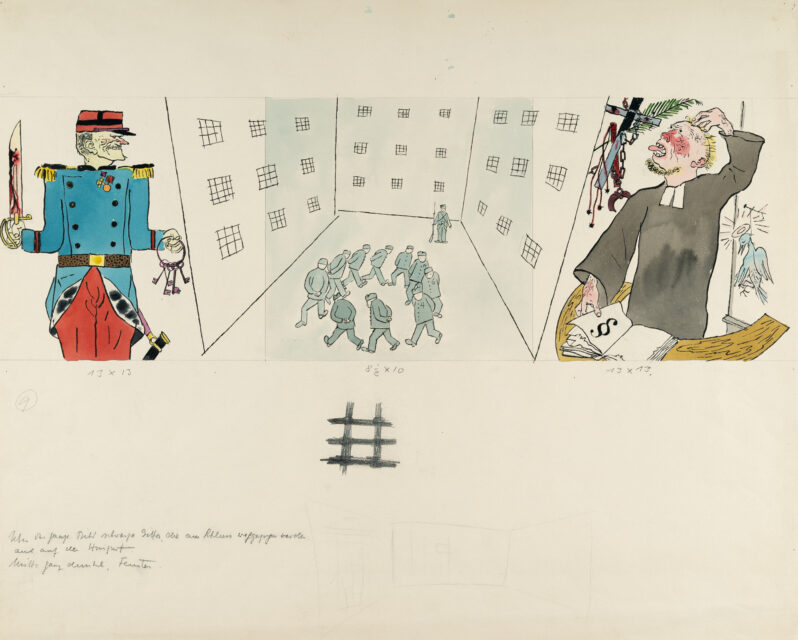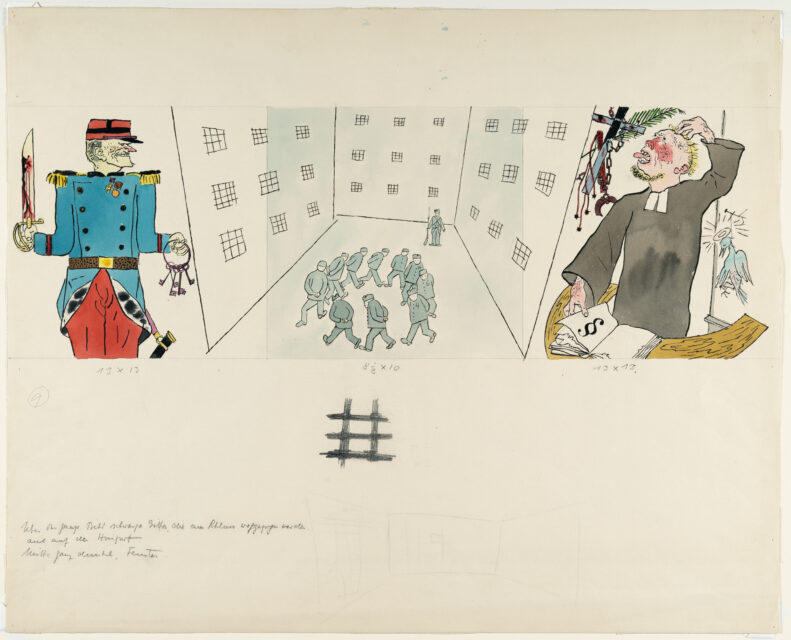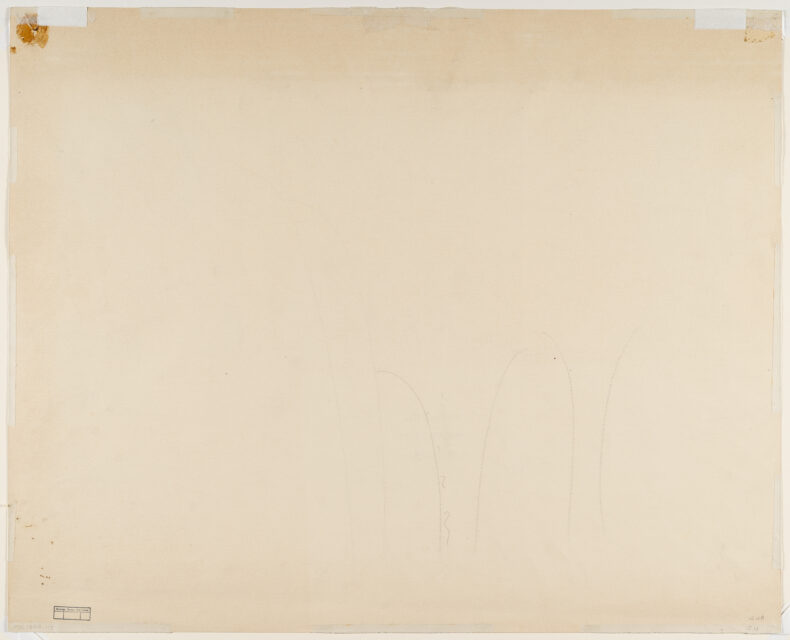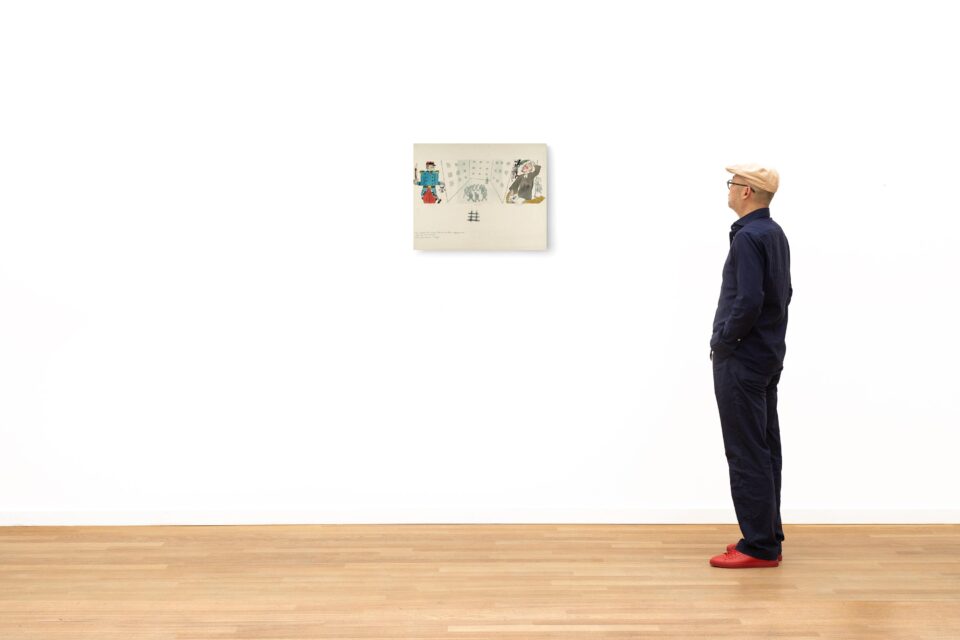Prison
Details
On the reverse with the traces beginnings of a further sketch and inscribed “TR-1894.117” in an unknown hand at the lower margin.
With a written confirmation of authenticity from Ralph Jentsch, Berlin, dated 3 June 2023. The work will be included in the forthcoming catalogue raisonné of works on paper by George Grosz.
Exhibition:
Theatrical Drawings and Watercolours by George Grosz, Busch Reisinger Museum, Harvard University, Cambridge, a.o. 1973/74, cat. no. 58, with b/w ill.
Provenance:
Estate of George Grosz, on the reverse with the stamp (not in Lugt);
Collection/Estate Serge Sabarsky, New York;
Collection/Foundation Vally Sabarsky, New York.
Descrizione
– Grosz’s design was the template for a monumental stage projection for the theatre play “The Drunken Ship” and shows traces of the intensive process
– The 1926 production was a new type of theatre, unknown at the time, in which artists from different professions worked together using the latest techniques
– The popular caricatures of the company can be seen bright and fresh in colour
From 1919 onwards, Grosz worked with leading figures in the literary and theatre world and took on a variety of stage and costume designs. His collaboration with the director and artistic director Erwin Piscator was particularly successful. The stages he managed are considered the epitome of Berlin avant-garde theatre of the 1920s and used all the technical means available at the time in his productions, such as turntable, simultaneous and tiered stages, motorised bridges and image and film projections.
On 21 May 1926, Piscator premiered “The Drunken Ship”, a staged ballad by Paul Zech, at the Volksbühne to sensational reviews in the press. The drama depicts scenes from the eventful life of the French poet Arthur Rimbaud (1854-1891), who enlists as a mercenary in the Dutch colonial army on Java before managing a French quarry on Cyprus, trading in furs and coffee in Yemen and travelling on expeditions to Egypt, Ethiopia and Somalia. Zech chose the title of Rimbaud’s ballad of the same name (“Le Bateau ivre”) for his theatre piece, which is one of the most important long poems in world literature and anticipates future artistic design methods of Expressionism and Surrealism.
“In order to play the 18 images (…) in quick succession, Erwin Piscator and his set and costume designer Edward Suhr decided to completely dispense with conventional decoration. Only in the (…) ‘Schiffsbild’ (…) was the fragmentary structure of a ship visible. Otherwise, only a few props – furniture, chairs, tables, beds – stood in front of a three-part projection screen covered with canvas, which formed the background of the scene. The projection screen was constructed in such a way that the side panels could be folded back and forwards. The drawings by George Grosz were projected onto these surfaces. (…) With the projections by George Grosz, Piscator broke the mould of the previous conventional stage design by organically incorporating the new technical means into his production.” (Lothar Schirmer, George Grosz as a stage and costume designer, in: exhib. cat. George Grosz – Drawings for Book and Stage, Stadtmuseum Berlin, 2001, p. 105/106)
* Tutte le informazioni includono la commissione a carico dell'acquirente (27%) senza IVA e senza garanzia. Salvo errori.
** Tutte le informazioni più la commissione a carico dell'acquirente e l'IVA e senza garanzia. Salvo errori.
*** Con riserva: L'offerta è stata accettata al di sotto del limite. L'acquisizione dell'opera potrebbe essere ancora possibile nella nostra vendita post-asta.
R = Le opere d'arte regolarmente tassate
N = Opere d'arte soggette a tassazione differenziata e provenienti da un paese non UE
Non è consentita la riproduzione e la distribuzione privata o commerciale di tutte le illustrazioni delle opere esposte nell'archivio della mostra e dell'asta. Tutti i diritti riservati.





